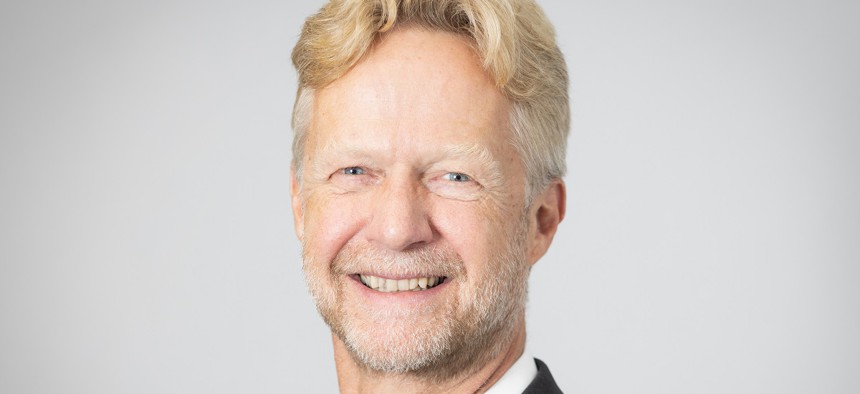Nonprofits
Philanthropy: Rethinking the value of charities during a season of giving
Emphasis must be placed on results.

Michael Thatcher is president and CEO of the rating organization Charity Navigator Image provided by Charity Navigator
For years many people who have wanted their dollars to do the most good in the world have been focused on the technical term “overhead.” That’s the word that focuses on a charity’s spending for things other than services, such as fundraising costs. The idea was that spending too much on overhead meant a charity wasn’t providing enough service.
It is time to move on from that focus. It is an outdated and inappropriate way to measure the effectiveness of charities, one that my organization, Charity Navigator, used to perpetuate. Today, we focus on organizational health and results. Donors should be aligned with a charity’s mission and then validate that the mission is effectively being achieved.
It’s not always even clear what overhead really is. For example, things like salaries and rent are not inherently overhead. The primary purpose of the salary matters, so if an employee at a nonprofit spends almost all their time delivering services and 10% on fundraising, then only that 10% of their salary can be considered overhead.
We didn’t create the overhead myth, but historically, our ratings amplified it. Now it’s time to turn down the volume on overhead. (As an aside, it’s worth noting that studies have documented that the overemphasis on overhead has done harm to charities.)
This is why in recent years, Charity Navigator, which provides free access to ratings, data, tools, and resources to guide philanthropic decision-making, and others in the philanthropic field have begun to prioritize outcomes over overhead. The overhead ratio tells a donor little about a charity’s results and or if it accomplished or changed anything in society.
We have expanded our ratings to evaluate impact and results, leadership and adaptability, and culture and community, with the goal of articulating overall organizational health, connectivity with those they serve and, where possible, the actual outcomes obtained with a cost per outcome analysis. This allows the prospective donor to more clearly understand what their dollars will achieve rather than where they were spent. It is harder to rate charities on these metrics, but we believe we serve both donors and charities better by trying, and ultimately those served by charities will benefit through improved results delivered by high-performing charities.
The uncertainty over how best to understand the impact of giving is likely one of the factors behind the decline in giving. The National Philanthropic Trust documented a 3.4% decline in overall giving last year, even though giving by corporations, foundations and bequests all increased. But giving by everyday individuals – the largest group of donors – continues to decline, and the question of how dollars can do the most good is one that deserves an answer.
Wealthy benefactors have long struggled with this problem. Steel magnate Andrew Carnegie, whose generosity created Carnegie Hall, said that “how to do genuine good and not mischief by the giving of money is one of the most difficult problems with which man has to deal.”
Amazon founder Jeff Bezos made a similar lament last year when he announced his intention to give most of his fortune to charity. Wealthy donors sometimes talk about the burden of giving away money because, they say, they feel a responsibility not to waste their money on ineffective solutions to society's problems. This is why they often hire staffs of experts to investigate and vet charities they are thinking about supporting.
The way to increase generosity is to build trust in the philanthropic sector by making it easier to make informed giving decisions and invest in social outcomes, through demonstrated results. We need to give everyday donors better, fuller, more nuanced information that they can consider. We need to equip donors with more information that illuminates a charity’s health and effectiveness. They need information on a charity’s leadership and adaptability, its culture and community, and especially its impact and results.
Rating organizations like Charity Navigator are a conduit of information to potential donors. We are better able to provide that fuller, nuanced picture with the help of charities by providing the information necessary to assess outcomes. Doing so helps us and other rating agencies, but more importantly, it helps donors and it helps the organizations themselves.
A healthy organization is one that is making a positive difference in the world. A donor can’t know that by just looking at the numbers and seeing if a charity is paying their people the least amount of money to get the most done. It is time to move toward a different way of measuring effectiveness. Financial ratios are less important than whether a charity is doing the work it has promised to do, and doing it in a way that meets its community’s needs.
Measuring effectiveness requires a different set of metrics. Donors should stay focused on the charities’ ability to attain their mission within their means. If a charity purports to help people who are homeless, look at how many people it’s helped to move inside. If a charity says it is educating therapists to address a mental health crisis, ask how many graduates it’s produced and how long they stay in the field. Measure the work and rather than focus on where the money is spent, focus on what the money accomplishes.
Michael Thatcher lives in New York City and is president and CEO of the rating organiztion Charity Navigator.
